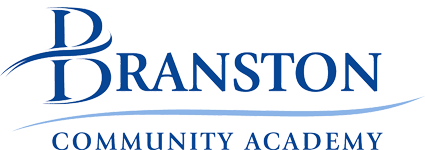
Welcome to the Maths Department

Our Intent
Mathematics is the means of looking at the patterns that make up our world and the intricate and beautiful ways in which they are constructed and realised. Numeracy is the means of making that knowledge useful.
Mathematics contributes to the school curriculum by developing pupils’ abilities to calculate; to reason logically, algebraically, and geometrically; to solve problems and to handle data. Mathematics is important for pupils in many other areas of study, particularly Science, Technology and Business. It is also important in everyday living, in many forms of employment, and in public decision-making. As a subject in its own right, Mathematics presents frequent opportunities for creativity, and can stimulate moments of awe and wonder when a problem is solved for the first time, or a more elegant solution to a problem is discovered, or when hidden connections suddenly manifest.
It enables pupils to build a secure framework of mathematical reasoning, which they can use and apply with confidence. The power of mathematical reasoning lies in its use of precise and concise forms of language, symbolism and representation to reveal and explore general relationships. These mathematical forms are widely used for modelling situations; a trend accelerated by computational technologies.
The subject transcends cultural boundaries and its importance is universally recognised. Mathematics helps us to understand and change the World.
KS3 Structure
| Autumn | Spring | Summer | |
|---|---|---|---|
| Year 7 | Sequences Algebraic notation and substitution Expressions and equations Place value, ordering and rounding Four operations Averages and range Rounding and estimation | Graphing data Fractions, decimals and percentages Directed number Fractions and percentages of amounts Perimeter and area | Speed, distance and time Properties of number Add and subtract fractions Angles and polygons |
| Year 8 | Ratio Proportion and scale Algebraic manipulation Coordinates and graphs Multiply and divide fractions Symmetry and reflection | Area, volume and density Equations and inequalities Percentages Indices Standard form Interpret and represent data | Angles in parallel lines and polygons Tables and probability Circles Graphs and charts Sequence |
| Year 9 | Properties of number Percentages Area and volume Equations, inequalities and formulae Fractions Rates Standard form | Maths and money Straight line graphs Ratio and proportion Constructions and congruence Similarity Algebraic manipulation | Pythagoras’ theorem Non-linear graphs Probability Transformations Simultaneous equations Trigonometry |
KS4 Structure
| Autumn | Spring | Summer | |
|---|---|---|---|
| Year 10 | Algebraic manipulation Equations, inequalities and formulae Quadratic expressions and equations Percentages Ratio and scale Work with fractions | Non-calculator methods Straight line graphs Probability Rounding and estimation Perimeter, area and volume Interpret and represent data Non-linear graphs | Angles Graphs and diagrams Vectors Factors and powers Pythagoras’ theorem and trigonometry Simultaneous equations |
| Year 11 | Ratio and proportion Area and volume Similarity and congruence Sequences and proof Standard form Work with circles (F) Circle theorems (H) Set notation and Venn diagrams Vectors | Functions and graphs Equations and formulae Rates Angles, bearings and trigonometry Constructions and loci Transformations | Revision and consolidation |
The specification document for this course can be found below:
KS5 Structure
| Autumn | Spring | Summer | |
|---|---|---|---|
| Year 12 | Surds and indices, Coordinate geometry, Trigonometry, Quadratic functions, Equations and inequalities, Polynomials, Vectors, Binomial expansion | Graphs and transformations, Differentiation, Kinematics, Forces and Newton’s laws, Data processing, Probability, Binomial distribution | Logarithms and exponentials, Partial fractions, Sequences and series |
| Year 13 | Differentiation, Integration, Trigonometry, Algebra | Integration, Differential equations, Vectors, Parametric equations, Proof, Numerical methods, Kinematics, Projectiles, Probability | Probability distributions, Hypothesis testing, Force and motion, Friction, Moments |
Extra Curricular Activities and Clubs
We encourage all students to participate in the extra-curricular programme we offer. Our clubs and activities are designed to be inclusive for all; the broad range on offer ensures that there is something for students of all ages, abilities and backgrounds to get involved with. We regularly review our offer to meet the ever-changing needs of our students.
The extra-curriculum clubs and activities for the current (and previous) academic term can be found by visiting the link below.
Career Pathways
A good maths qualification is always highly respected and essential for careers in astronomy, finance, medicine, business, science, humanities, engineering, technology, computing, architecture, management and teaching.

